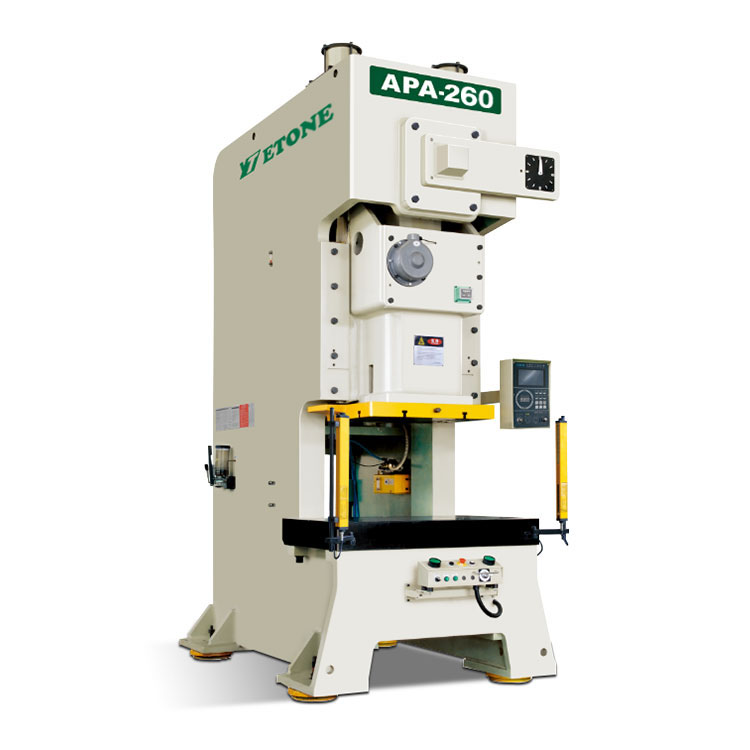The transmission mode of the single crank stamping press has the following advantages:
Simple structure: The transmission system of the single crank stamping press adopts a crank-connecting rod mechanism, which has a simple structure, fewer components, and is easy to maintain and repair.
High efficiency: Driven by an electric motor, the crank and connecting rod system can efficiently convert rotary motion into reciprocating linear motion, provide stable stamping force, and is suitable for high-frequency stamping work.
Smooth torque transmission: The crank-connecting rod mechanism can provide relatively smooth power transmission, reduce unnecessary vibration and impact, thereby improving working stability and precision.
Large stamping force: The transmission system of the single crank stamping press can generate a large stamping force, which is suitable for stamping various metal sheets, especially processes that require high pressure.
Strong adaptability: This transmission mode is suitable for most standard stamping operations and can operate efficiently in different production environments.
Easy maintenance and replacement: Due to the simple structure and easy disassembly and replacement of components, the repair and maintenance costs are low when a failure occurs, which is convenient for operators to perform daily inspections and maintenance.
In summary, the transmission method of the single crank stamping press has great advantages in terms of high efficiency, stability and convenient maintenance, so it is widely used in various stamping production processes.
